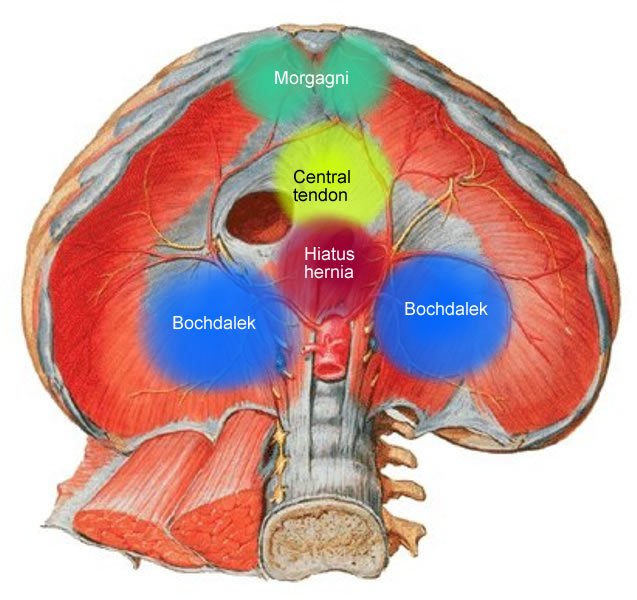natomy of CDH | CDH Treatments | CDH Statistics | CDH Q&A | Parent Reference Guide
Congenital Diaphragmatic Hernia (CDH) is a birth defect characterized by the incomplete formation of the diaphragm, the muscle that separates the chest from the abdomen. This condition allows abdominal organs, such as the intestines, liver, and spleen, to move into the chest cavity, which can hinder lung growth and development during pregnancy.
CDH occurs in approximately 1 in 2500 births, with over 1600 babies being diagnosed annually in the United States alone. The exact cause of CDH is not fully understood, but it is believed to result from a combination of genetic and environmental factors.
The development of the diaphragm typically occurs during the first eight weeks of pregnancy. In CDH cases, the size of the hole or defect in the diaphragm varies, and it determines the extent to which the baby’s lungs, heart, and other internal organs may be affected.
Around 40% of CDH cases are associated with other birth defects, most commonly involving the heart. These co-existing conditions can be challenging to diagnose until after the baby is born. Additionally, CDH patients may experience lung hypoplasia (underdeveloped lungs) and pulmonary hypertension (high blood pressure in the lungs).
The prognosis for babies diagnosed with CDH remains at 50%, though predicting the outcome for each individual case is challenging. Factors such as lung size, kidney function, brain health, and other possible complications influence the overall health of CDH children, making it a complex and diverse condition.
CDH can be categorized into three types: left-sided, right-sided (Bochdalek), and bi-lateral (Morgagni). Left-sided CDH is the most common form and may involve the small and large bowel, stomach, spleen, and liver. Right-sided hernias typically affect the large bowel and/or liver. Bi-lateral CDH is rare and affects both sides of the diaphragm.
Each baby with CDH is unique, and their condition cannot be predicted solely based on measurements or lung function. The medical community continues to study and explore this complex condition to improve diagnosis, treatment, and outcomes for affected infants and families.

The diagnosis of CDH is usually made during routine prenatal ultrasound examinations, although it may also be detected after birth if symptoms are present. Timely diagnosis and appropriate medical management are crucial for the best possible outcomes for affected infants.
Treatment options for CDH depend on the severity of the condition. In some cases, surgery to repair the diaphragmatic defect is necessary shortly after birth, while in milder cases, the condition may be managed with medical interventions to support lung function and overall health.
Long-term outcomes for individuals with CDH can vary depending on the extent of lung damage and other associated health issues. Many children with CDH go on to lead healthy lives with appropriate medical care and support, while others may experience ongoing respiratory challenges or other complications.
Research and medical advancements continue to improve our understanding and management of CDH, offering hope for better outcomes for affected individuals and their families. Early diagnosis, specialized medical care, and ongoing support play a crucial role in providing the best possible quality of life for those with Congenital Diaphragmatic Hernia.

